LCD TVs have passed out! OLED TVs are not yet available. How come a QD TV! What is OLED? What is Quantum Dots?
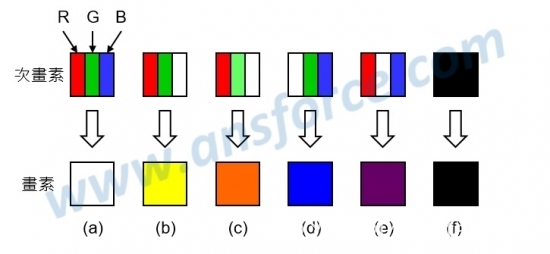
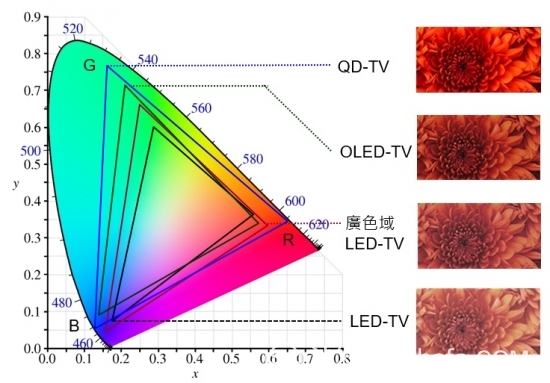
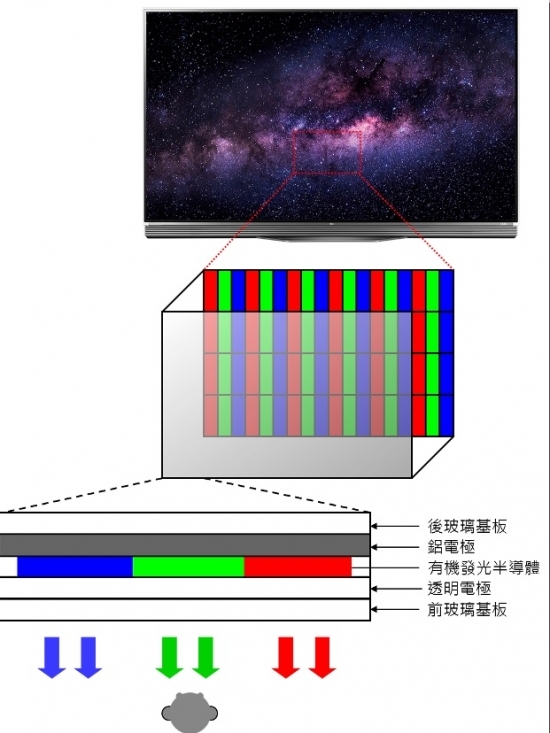

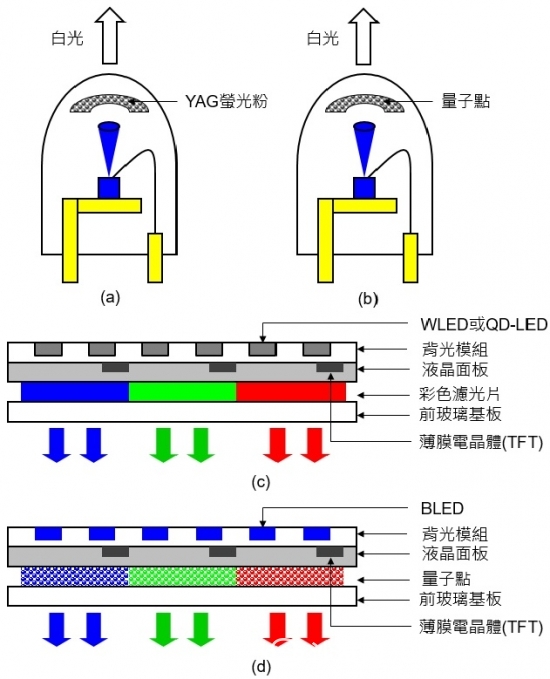
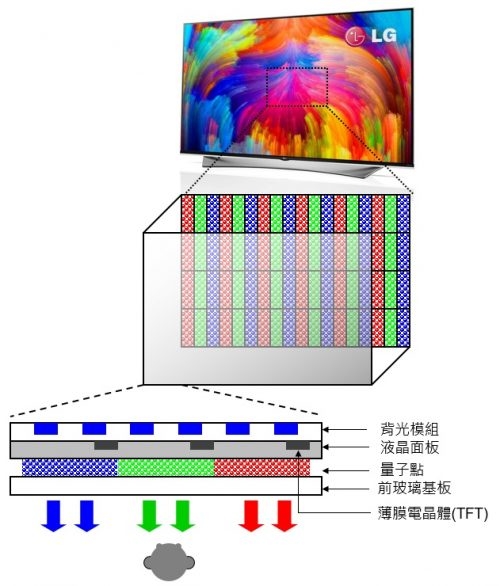
Since 1990, the first round of the TV leap began globally. The Cathode Ray Tub (CRT) TV, which has accompanied us for more than half a century, has been replaced by a smaller liquid crystal display (LCD). Has now become the protagonist of the living room. However, scientists have not stopped the pursuit of color quality and thickness reduction of TV screens. After several years of development, organic light emitting diodes (OLEDs) and Quantum Dots (LCDs) with richer thickness and thinner colors , QD) TV is maturing, and the possibility of becoming a rising star to gradually replace LCD TVs is getting higher and higher. Let's take a look at the difference between these two new types of future monitors.
The three primary colors of light
Before understanding the display principle, let us first understand how colors are achieved in various display technologies. They are all in red (R), green (G), and blue (Blue) colors. Different brightnesses can be combined into the colors of almost all visible light in the continuous spectrum, so we call the red, green, and blue colors the "three primary colors of light." As shown in Figure 1, suppose there is a square to display a certain color. Such a square is called "pixel". Cut the square vertically into three small squares, respectively representing RGB 3 kinds of colors. Colors, such small squares are called "sub-pixels".

â–² Figure 1: The red, green, and blue colors can be combined into almost any color in a continuous spectrum.
Color display
There are infinitely many colors of visible light, and the Chromaticity diagram in Figure 2 represents all the colors that the naked eye can see. The wavelength of light is the color. There are as many wavelengths as there are light, and there are many colors. The red, green, and blue colors are actually just an approximate visual experience. The wavelengths of light produced by different light-emitting components are somewhat different. Therefore, the colors that can be produced by using different light-emitting components are not in phase. A traditional LCD TV with a white LED (WLED) as the backlight is called “LED-TVâ€. It should be noted that although the manufacturer calls it LED-TV, it is actually “LED-backlitâ€. The source LCD-TV" uses the "Color filter" to generate RGB 3 colors of light. The vertices of the triangle in the figure are RGB 3 colors, and the colors in the triangle are the TV's capabilities. The combination of all colors (the larger the triangle represents the more color the more realistic the colors can be combined), obviously cannot be combined into all the colors that can be seen with the naked eye, but this is enough to make the television let us see the real image; Later, some manufacturers developed RGB 3 colors produced by different white light emitting diodes (LEDs) and color filters, which can be combined into more colors (red triangles), called “wide color gamut LED-TVâ€, but these two TVs use color filters to filter white light to produce RGB colors, and the white LEDs used in industrial backlights are limited in color, so the colors that can be combined are still not enough; see RGB 3 colors produced by OLED-TV can be combined into more colors (green triangles); and RGB colors produced by quantum dots (QD-TV) can be combined into more colors (blue Color triangle).

â–² Figure: Chromaticity diagram.
Organic light emitting diode
Organic light-emitting diodes (OLEDs) are also called "Organic Electrical Luminescence" (OEL). The structure of the organic light-emitting diode (OLED), which is shown in FIG. 3, can emit red, green, and blue light. The organic molecules that emit light are vapor-deposited on the conductive glass, and then the metal electrodes are vapor-deposited to directly inject electrons and holes into the organic light-emitting semiconductors of different colors. The electrons and the holes combine to emit light in the organic light-emitting semiconductor. Its structure is simple and its brightness is high enough. Unfortunately, organic light-emitting semiconductors are actually "organic molecules" (similar to plastics). Due to the unstable properties of light-emitting materials, the yield rate during production is very low and the cost has not been reduced. With a short life, it fades after being used for a long time, so it has been used in small quantities on monochrome displays. After more than 10 years of hard work, South Korea's Samsung and LG have successfully improved the yield rate. Currently, the company has mass-produced more than 60 color TVs, leaving only the problem of overselling. It looks like It seems that it has slowly seen its commercial value.

â–² Figure 3: Organic Light Emitting Diode (OLED) construction. (Source:LG)
Quantum Dot TV (QD-TV)
Scientists have discovered that when the size of a material is as small as 100 nanometers or less, a "quantum confinement effect" occurs, in which electrons and holes are confined within the nanomaterial to form a self-assembled stable state, resulting in changes in the luminescent properties. Moreover, the smaller the size of the nanomaterial, the stronger the luminous intensity of the material and the shorter the wavelength of light emission (blue). This phenomenon is called “blue shiftâ€. As shown in Figure 4, the wavelengths of light of different colors are different. Therefore, the wavelength of light is the color. In the visible light, the wavelength of the red light is the longest, the green light is the second, and the blue light is the shortest. In other words, when the size of the nano material is large, the light intensity is weak, and the color is red light (the longest wavelength). When the size of nanomaterials becomes smaller, the luminous intensity becomes stronger, the color is green (secondary wavelength); when the size of the nanomaterial is smaller, the luminous intensity is stronger and the color is blue (shortest wavelength).

â–² Figure 4: The "blue shift" of the quantum confinement effect. (Source: Tae-Ho Kim et al., Heterogeneous stacking of nanodot monolayers by dry pick-and-place transfer and its applications in quantum dot light-emitting diodes, Nature Communications, Article number: 2637, Published 06 November 2013)
The principle of traditional white light emitting diode (WLED) light emitting is blue light emitting diode (Blue LED, BLED) crystal blue light emitting YAG phosphor, phosphor absorbs blue light to produce white light, as shown in Figure 5 (a), previously mentioned The RGB color of these components is limited, and the colors that can be combined are still not enough, so we can directly use quantum dots (QDs) instead of phosphors called “QD-LEDsâ€, as shown in Figure 5(b). As shown in the figure, using this component as the backlight of the liquid crystal display (LCD) can increase the RGB color, as shown in Fig. 5(c), so the colors that can be combined are greatly increased, and there is no need to modify too many liquid crystal displays (LCDs) The structure is the lowest cost, but it still must use color filters.
If you want to increase the RGB color, you can use the blue light-emitting diode (BLED) as the backlight source, as shown in Figure 5(d), and image it through the LCD panel, and print the quantum dots directly on the panel to form different times. Instead of a color filter, a pixel is illuminated by a blue backlight module. A red quantum dot absorbs blue light and emits red light. A green quantum dot absorbs blue light and emits green light. A blue quantum dot absorbs blue light and emits blue light. Since the pixels are the same color as the backlight module, the blue quantum dots may not be used. The final QD-TV configuration is shown in FIG.

â–² Figure 5: Schematic diagram of a white LED and QD-LED TV.

â–² Figure 6: Schematic diagram of QD-TV.
in conclusion
The traditional LCD TV market with white light-emitting diodes (WLED) as backlight has matured, and there is not much room for improvement in technology; although there are 3 kinds of RGB produced by organic light-emitting diode TV (OLED-TV). Colors can be combined into more colors, but lower yields result in higher prices, and it seems unlikely that they can be used in a short time; QD-TV produces the most RGB 3 colors Color, and does not need to modify too much of the liquid crystal display (LCD) structure, is indeed one of the currently available methods, but remember, in fact, quantum dot TV is also a kind of LCD TV, it still depends on the liquid crystal image, so it Still a kind of LCD TV, marketing quoted "Quantum dot" sounds full of "technical colors" and most of the terms are advertising marketing methods. In the foreseeable future, the television in our homes will be getting thinner and thinner, and the colors of the pictures will be more and more abundant, allowing us to see the real picture as natural as the TV.
Smart TV/box information can focus on smart TV information network sofa butler (http://), China's influential TV box and smart TV website, providing information, communication, etc. on TV boxes, smart TVs, smart TV software, etc. Answering questions.
Our company specializes in the production and sales of all kinds of terminals, copper terminals, nose wire ears, cold pressed terminals, copper joints, but also according to customer requirements for customization and production, our raw materials are produced and sold by ourselves, we have their own raw materials processing plant, high purity T2 copper, quality and quantity, come to me to order it!
LYF Copper Lube Terminals,Ring insulated terminals
Taixing Longyi Terminals Co.,Ltd. , https://www.lycopperlugs.com